How to address wedding invitations: Guide and examples
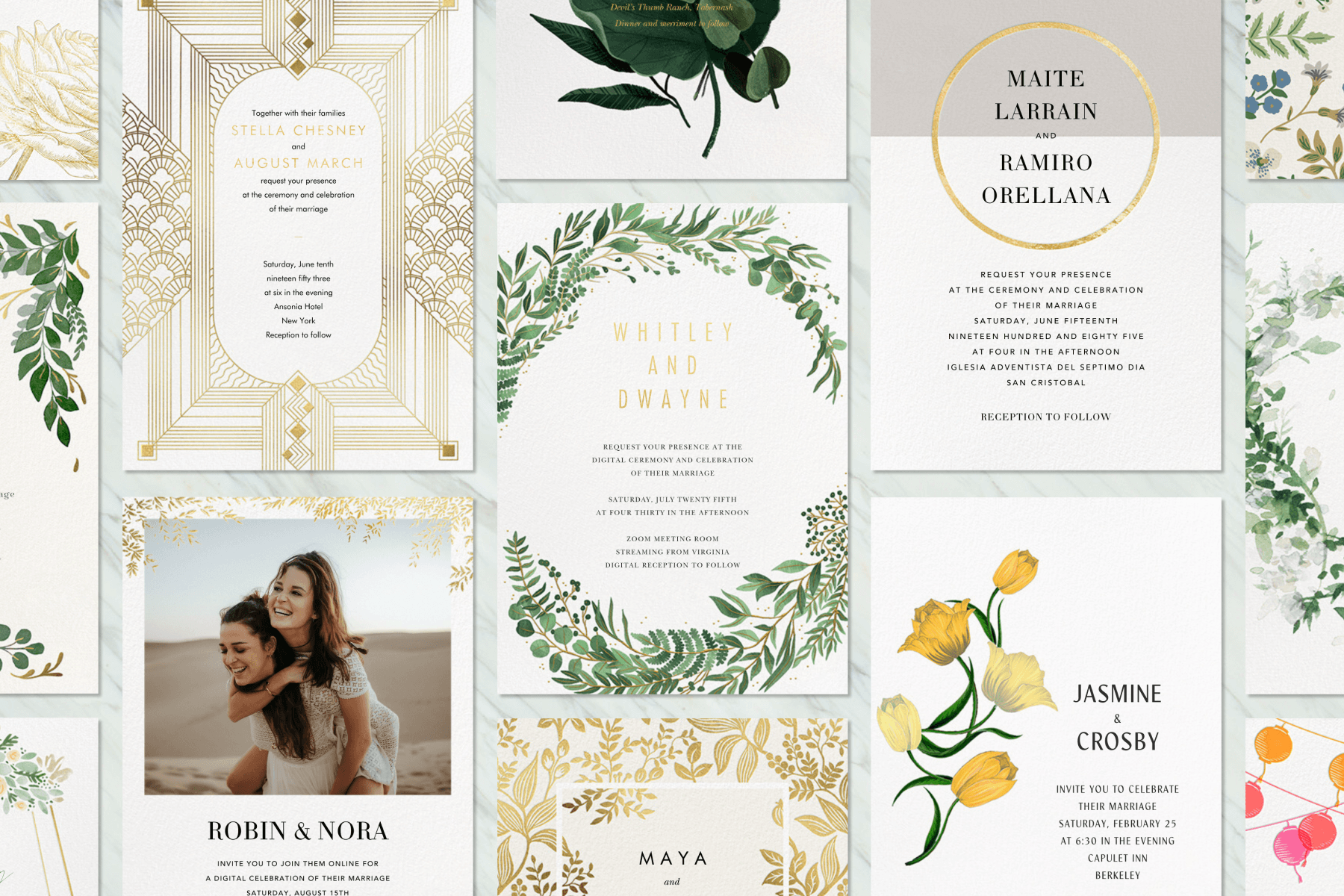
You’ve chosen gorgeous wedding invitations to match your style, carefully crafted the wording inside, and figured out how many people you’ll be inviting to the wedding. Now it’s time to send them to your friends and loved ones—but first, you’ll need to address the envelopes correctly.
Between married couples, unmarried couples, guests with children, guests with advanced degrees, and married couples with different last names, addressing wedding invitations may seem complicated. But with Paperless Post, it’s as straightforward as choosing a wedding invitation, especially with this complete guide on how to address wedding invitations for formal weddings, casual weddings, and everything in between.
Table of Contents
General etiquette for addressing wedding invitations
No matter the current wedding invitation trends, the basics of wedding invitation address etiquette apply to every type of invitation design. As you plan out who you’ll invite and settle on the right wedding invitation wording, make note of the following:
- Names: For formal invitations, use your guests’ full names instead of initials, nicknames, or shortened names (unless a guest strongly prefers a nickname or exclusively goes by another name). Skip middle names and initials unless a guest uses their middle name as part of their preferred name.
- Guest count: How many members of the household are invited? If everyone’s on the list, include all of their names (or address the invitation to the entire household, like “The Jones Family”). If you’re only inviting certain family members, only include their names on the envelope.
- Titles: Use guests’ correct honorifics and professional titles (Mr., Mrs., Miss, Mx., Ms., Dr.) in their abbreviated forms and any suffixes (such as Jr., Sr., Ph.D.) where needed. For formal invitations, follow traditional etiquette and spell tites out, such as “Doctor” or “Junior.”
- Miss, Mrs., and Ms.: Use “Miss” for unmarried women, “Mrs.” for married women (even if they use their maiden name), and “Ms.” for either unmarried or married women. If you’re not sure which one to use, go with “Ms.”
- Pronouns: Be respectful of the pronouns each guest on your list may use, and reference them accordingly when choosing their title. For a gender-neutral honorific, use “Mx.”
- Addresses: Use full street names rather than abbreviations (“Street” over “St.”). For online invitations that don’t need street addresses, use guests’ personal email addresses, not professional ones (unless you’ve been told otherwise).
- Spacing: When you include names on the same line, you’re implying that they’re married, or are invited as a couple. For guests who are not married but receiving one invitation, such as roommates or parents with adult children, include each name on a new line of the envelope.
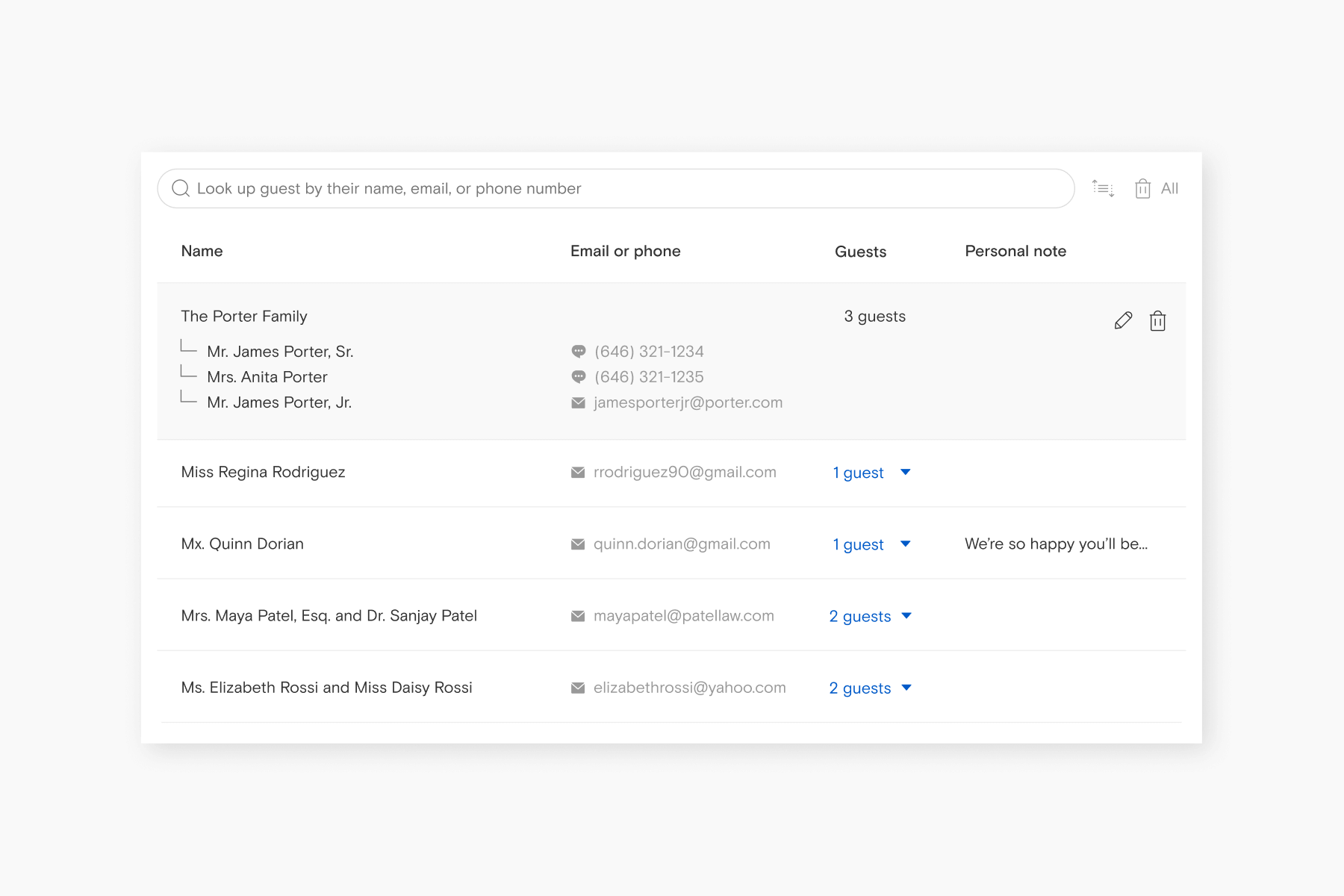
If you’re ever unsure of a guest’s preferences, just ask. They will likely feel honored by the care you’re taking to get it right.
Customizable designs from Oscar de la Renta, Rifle Paper Co., kate spade new york, and more.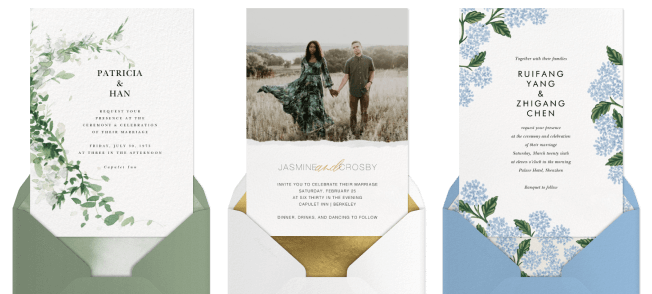
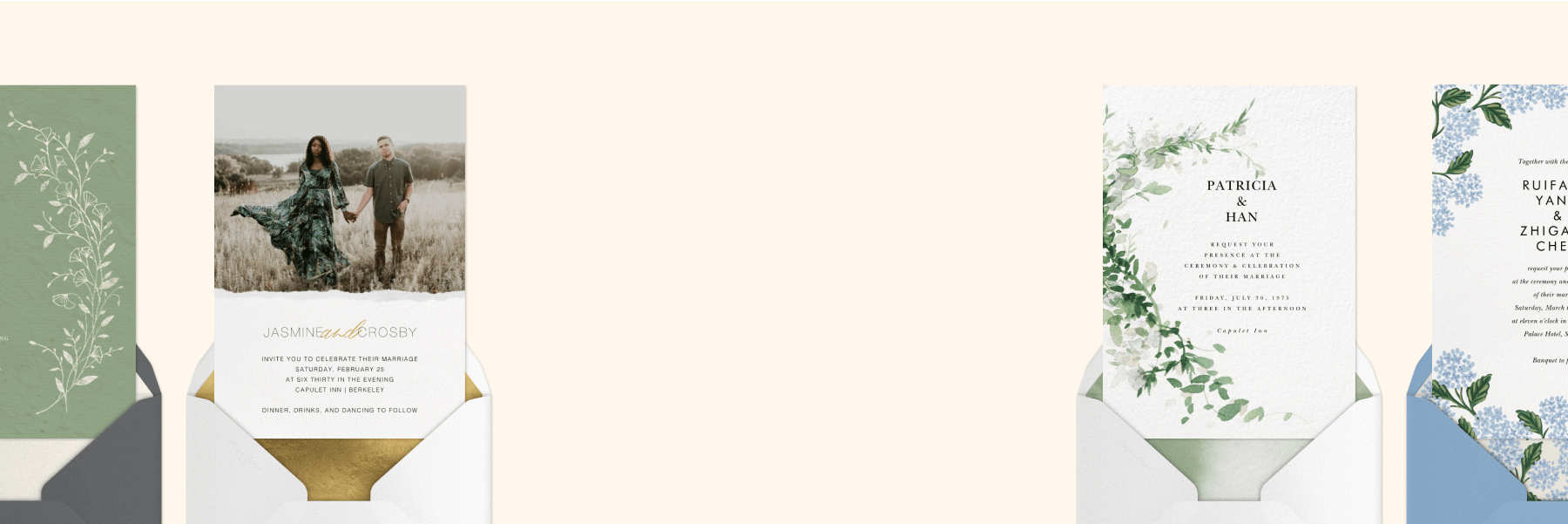
How to address wedding invitations to an individual
For a male guest, address the card with his full name and the honorific “Mr.,” regardless of his marital status. For example:
- Mr. James Porter
- Mr. Michael Rodriguez
Addressing a solo female guest depends on her marital status. Use “Miss” or “Ms.” for unmarried female guests and “Ms.” or “Mrs.” for married female guests.
- Ms. Eliza Porter
- Mrs. Regina Rodriguez
- Miss Maya Bryant
When inviting a nonbinary guest, use “Mx.” as a gender-neutral honorific.
- Mx. Warren Gareth
- Mx. Amy Tomasi
If you’re allowing an unmarried guest to bring a plus-one of their choosing, add “and guest” on the inner envelope or invitation following the invited individual’s name.
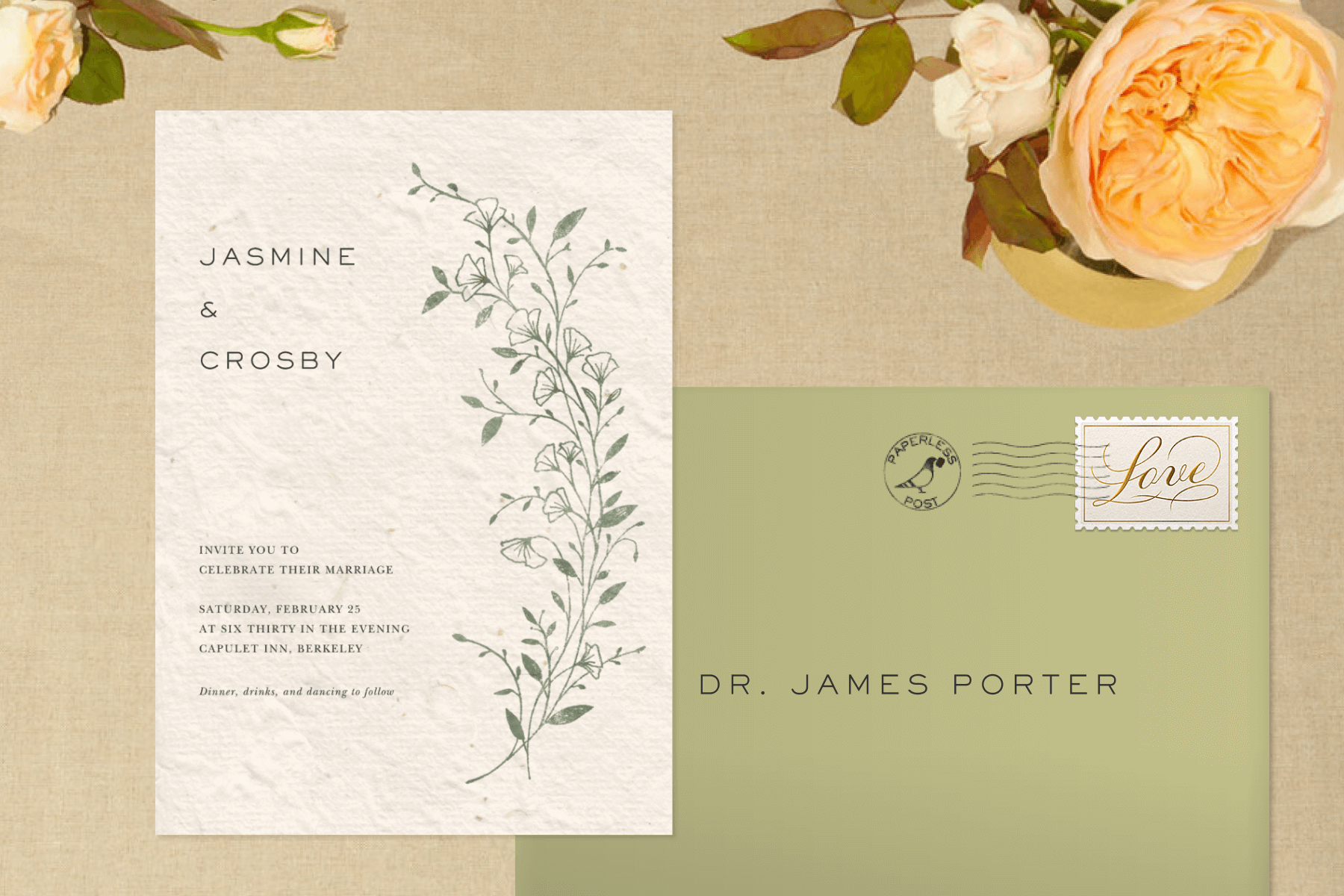
How to address an individual with a professional title or suffix
If your guest has a professional title, such as “Doctor,” “Reverend,” “Judge,” or “Colonel,” traditional etiquette suggests that you spell the title out. The same goes for suffixes such as “senior” or “junior” (but keep these lowercase).
For example:
- Reverend James Porter
- Judge James Porter
- Doctor James Porter
- Colonel James Porter
- Mr. James Porter, junior
However, if you’d like a more modern look to your invitations—or you need more space on the envelope—you can use abbreviations when needed. (“Jr.” and “Sr.” are capitalized when not spelled out.)
- Rev. James Porter
- Dr. James Porter
- Col. James Porter
- Mr. James Porter, Jr.
How to address wedding invitations to a married couple with the same last name
Traditionally, formal addresses to a married couple include the titles of each person, the husband’s first name, and the last name they share.
- Mr. and Mrs. James Porter
You can also include both guests’ first names with their titles for more modern wording.
- Mr. James Porter and Mrs. Eliza Porter
- Mr. James Porter and Mr. Phillip Porter
- Ms. Amy Porter and Ms. Eliza Porter
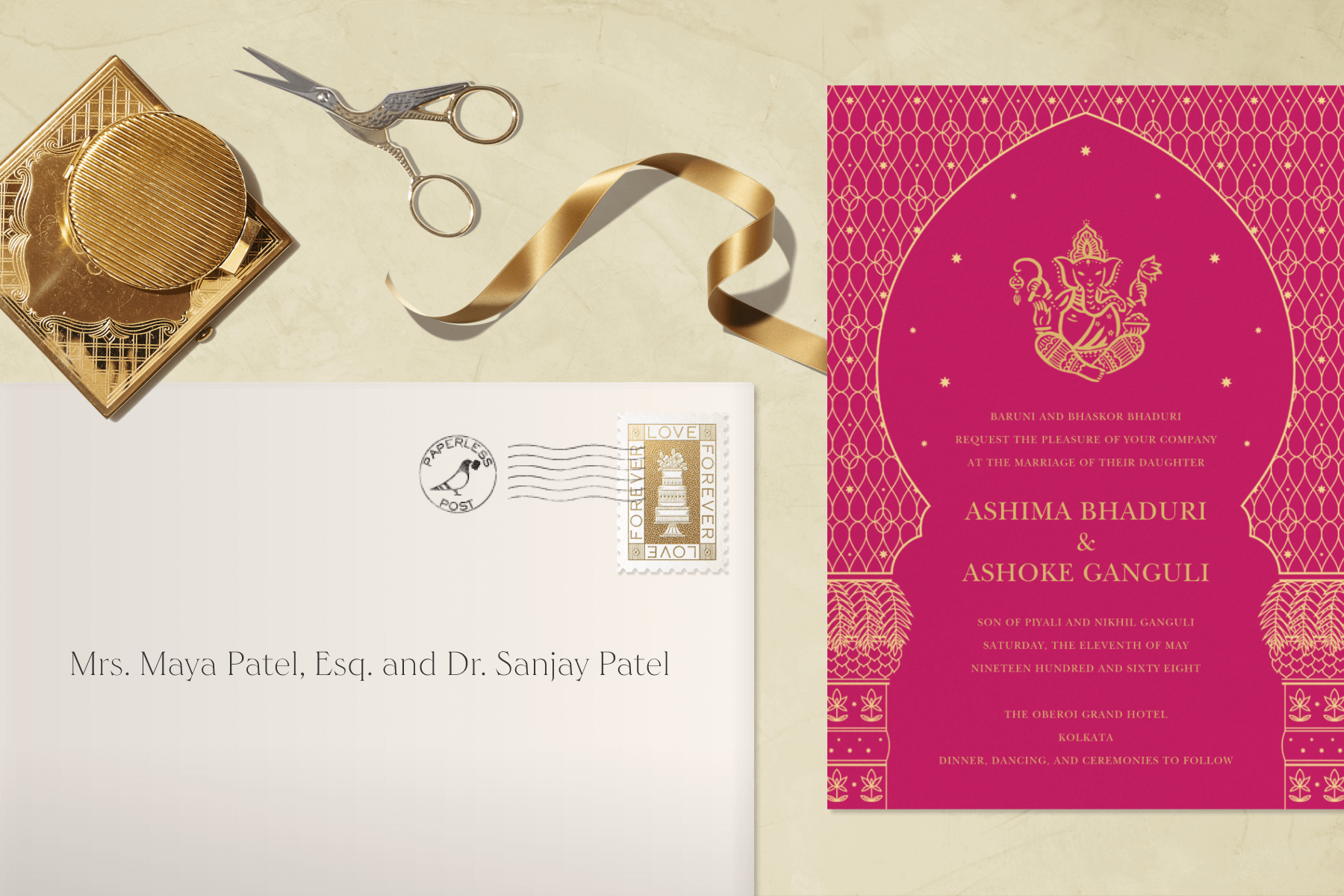
How to address a married couple with professional titles
When addressing a wedding invitation to a couple where one member has a professional title, you should list them first, regardless of gender. For example:
- Reverend Eliza Porter and Mr. James Porter
- Doctor Eliza Porter and Mr. James Porter
- Judge James Porter and Mr. Phillip Porter
- Colonel Amy Porter and Mrs. Eliza Porter
If both members of a couple have a professional title, include them both in your address.
- Colonel James Porter and Doctor Eliza Porter
- Reverend Eliza Porter and Judge Amy Porter
If both members of a couple share the same title and last name, start with “The” followed by their shared title (plural) and last name.
- The Doctors Porter
Some guests may use their professional titles after their names instead of before. Use these titles when you’re addressing them as an individual, not when you’re addressing them as part of a couple.
- Mr. James Porter, Esq.
- Ms. Eliza Porter, Ph.D
- Mrs. Eliza Porter, Psy.D
How to address a couple with different last names
Addressing a married couple with different last names is the same as addressing couples who share a last name when they are written out separately.
- Mr. James Porter and Mrs. Eliza Reed
- Mr. James Porter and Mrs. Eliza Porter-Watson
- Dr. Eliza Watson and Mr. James Porter
- Mr. Scott Holmes and Mr. Robert Henry
For unmarried couples attending the wedding together, address the invitation similar to that of married couples with different last names: simply list each person’s title and full name.
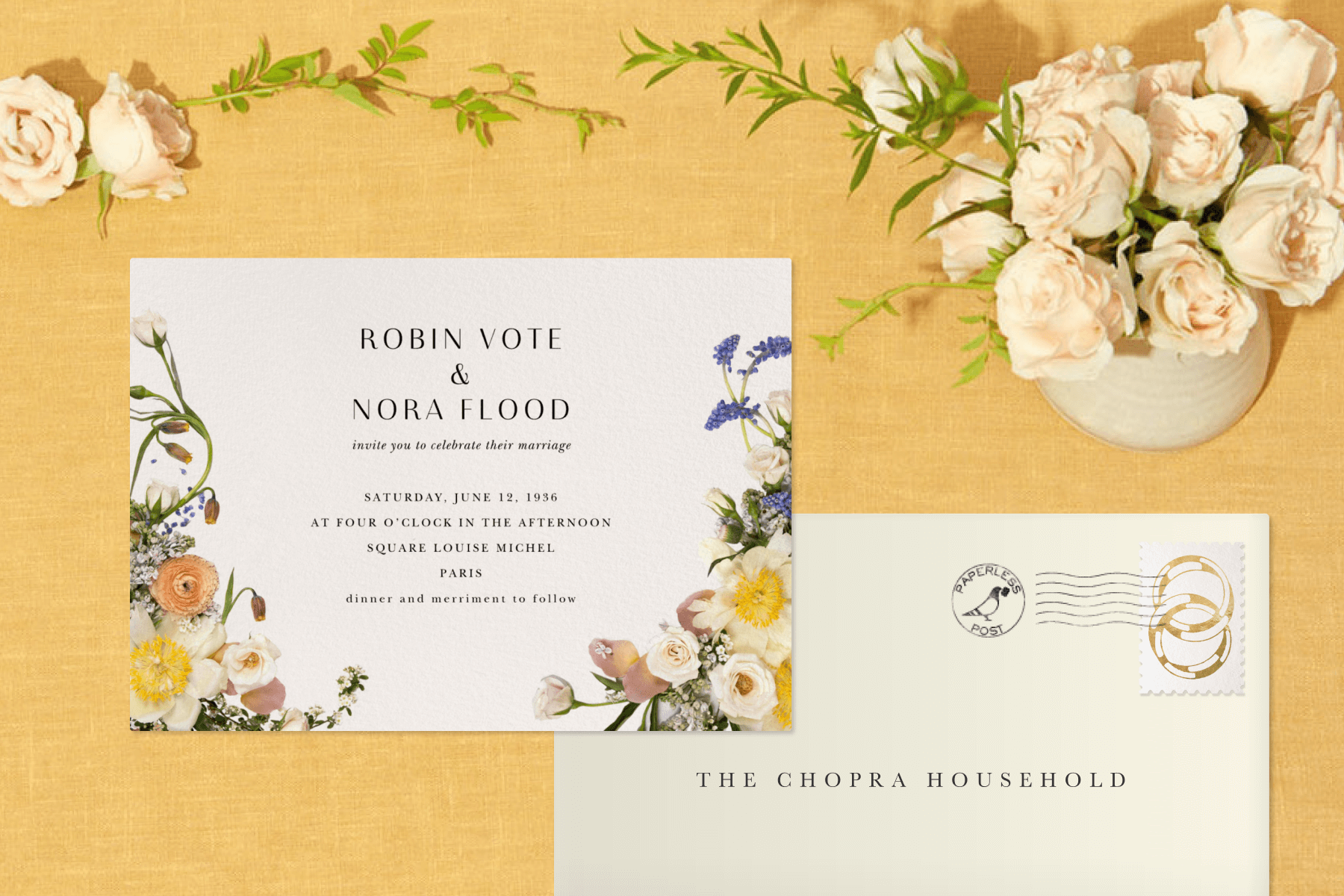
How to address wedding invitations to a family
If you’re inviting all the members of a household or family—including children—use a form of address that acknowledges all parties. While it’s a slightly less formal approach, it helps ensure you don’t leave anyone out.
- The Watson Family
- The Rodriguez Family
- The Chopra Household
If the family isn’t too large, you may also choose to include the children’s names—especially if they’re adult children living at home—underneath their parents’ names.
- Mr. and Mrs. James Watson
- Miss Meredith Watson
- Mr. Mike Watson
- Miss Ella Watson
Addressing wedding invitations for a casual wedding
What changes when your wedding is a more casual affair? In general, many of the guidelines above still apply in terms of ensuring accuracy and being sensitive to personal preferences.
However, depending on the informality of your wedding, you have the option to use a less formal addressing approach.
If the situation feels right, you can adjust your invitations to feel slightly more personal by:
- Skipping titles
- Using nicknames and shortened names
- Abbreviating street names
Here’s the bottom line: Do what feels right for you, but when in doubt, opt for the more formal approach.
Where to put address information: inner envelope vs. outer envelope
Once you’ve figured out which titles to use and for whom, consider the shape of your invitations and where those addresses will go. Figuring out how to address wedding envelopes also depends on whether you’re using printed or online invitations.
Print invitations: Single envelope vs. inner and outer envelopes
With print invitations, the outer envelope is the most formal layer and uses titles, full names, and the street addresses of any adults who are invited. For example:
Mr. James Porter and Mrs. Eliza Porter
1234 Blue Street
Gary, Indiana 46401
The inner envelope omits the street address. It can include titles and last names only, or first names for a personalized touch:
Mr. and Mrs. Porter
James and Eliza
If the invitees include children, you can also add them to the inner envelope below their parents’ names:
Mr. and Mrs. Porter
Edward Porter
Katie Porter
Online invitations: An easier approach
Using digital invitations saves you money and prevents excess paper waste—plus, you can avoid the confusion of inner and outer envelopes! With premium online wedding invitations from Paperless Post, your guests receive digital wedding envelopes in beautiful designs that follow the same rules as outer envelopes in print invitations (minus the street address, of course).
With Paperless Post, you can also upload a contact list for easy addressing and ensuring everyone’s contact information is correct. Then, when invitations are sent out, our RSVP tracking keeps you up to date on who’s coming and who can’t make it.
Paperless Post: The stress-free way to address your invitations
Addressing your invitations may seem like only a tiny tier of the detailed cake that is your overall wedding planning. But ensuring guests’ names, titles, plus ones, and family members are written out correctly shows how genuinely you welcome their presence. They’ll be even more excited to see their names on the perfect wedding invitation (and matching rehearsal dinner invitation). Once all of your invitations are properly addressed, find out when to send out your wedding invitations so everyone can plan to attend.
With Paperless Post, you can also customize your invitation’s envelope design, upload a personalized monogram to your Card design, and if you choose to share a link for your event, create a custom URL that can double as your wedding website.
